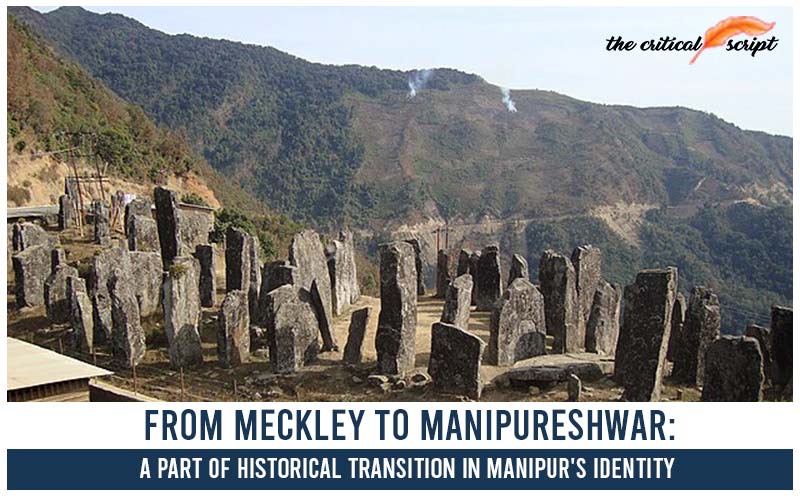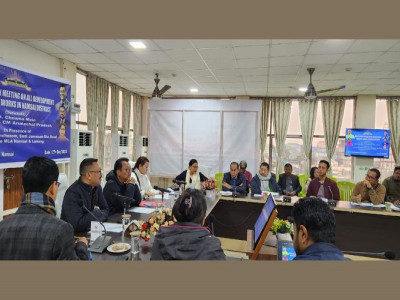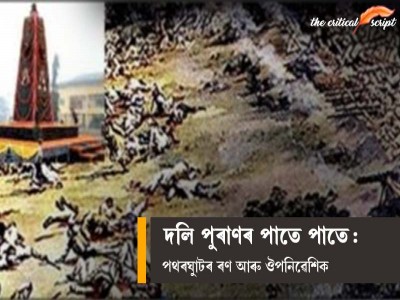
From Meckley to Manipureshwar: A part of historical transition in Manipur's identity
In Manipur's rich history, the transition from
"Meckley" to "Manipureshwar" marked a pivotal moment. This
shift in name and title not only reflected changes in political dynamics but
also underscored Manipur's journey towards asserting its cultural and sovereign
identity. This article explores the historical significance of this transition,
tracing its origins from early interactions with the British East India Company
to the reign of Maharaja Bhagyachandra and beyond.
The first recorded treaty between the British East
India Company and Manipur, signed in 1762, noted the kingdom as
"Meckley".This initial encounter set the stage for future engagements
and laid the foundation for formal relations between Manipur and the British.
The exact origin of "Meckley" as a term used to describe Manipur in
early British records isn't entirely clear from historical sources. It likely
stemmed from attempts to phonetically capture or anglicize the local name of
the kingdom as it was understood by British officials and traders at the time.
Reign of Maharaja Bhagyachandra (1759–1798):
Maharaja
Bhagyachandra, a key figure in Manipuri history, ascended to the throne and
ushered in an era of cultural revival and political stability.Under his rule,
the title "Manipureshwar" gained prominence, reflecting his authority
as the Lord of Manipur and symbolizing the kingdom's unity and
sovereignty.Bhagyachandra's reign saw significant developments in Manipuri
literature, arts, and governance, leaving a lasting legacy on Manipur's
cultural heritage.
Coinage and Symbolism:
Bhagyachandra
and his successors issued coins engraved with the title
"Manipureshwar" and other royal insignia.These coins not only served
as a medium of exchange but also as symbols of Manipur's political legitimacy
and cultural identity, reinforcing the kingdom's sovereignty.
The treaty of 1762 marked the beginning of formal
interactions between Manipur and the British East India Company.Over time,
these interactions shaped Manipur's political landscape, influencing alliances
and tensions as the British expanded their influence in the region.Despite
external pressures, Manipur under Bhagyachandra and subsequent rulers continued
to assert its autonomy and cultural distinctiveness.
Bhagyachandra was succeeded by his son, Maharaja Chourjit Singh (r. 1798–1813).
Chourjit Singh faced internal dissent and external pressures during his
rule.The British East India Company's influence in Manipur increased throughout
the 19th century. Manipur became a princely state under British suzerainty,
which meant it retained internal autonomy but acknowledged British paramountcy
in external affairs.Tensions between Manipur and the British escalated, leading
to the Anglo-Manipur War of 1891. The British gained control over Manipur after
defeating the Manipuri forces.Manipur became a part of independent India in
1947. It initially joined as a Union Territory and later became a full-fledged
state within the Indian Union in 1972.
The transition from "Meckley" to
"Manipureshwar" encapsulates a transformative period in Manipur's
history, characterized by cultural resurgence and political assertion. Through
the reign of Maharaja Bhagyachandra and the adoption of new titles and symbols,
Manipur navigated the complexities of colonial interactions while preserving
its unique identity. This historical journey underscores Manipur's resilience
and enduring quest for sovereignty amidst changing times.
Disclaimer: The opinions expressed in this article are those of the author's. They do not purport to reflect the opinions or views of The Critical Script or its editor.

Newsletter!!!
Subscribe to our weekly Newsletter and stay tuned.

















Related Comments